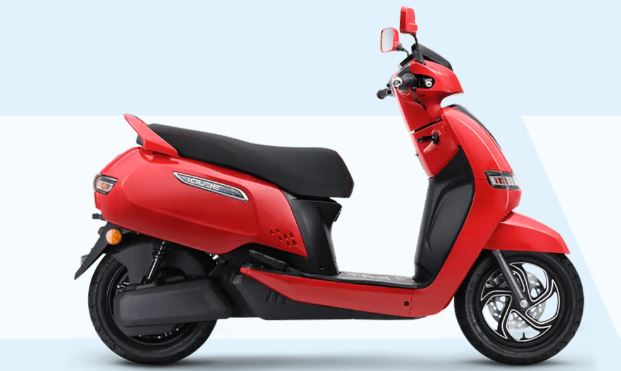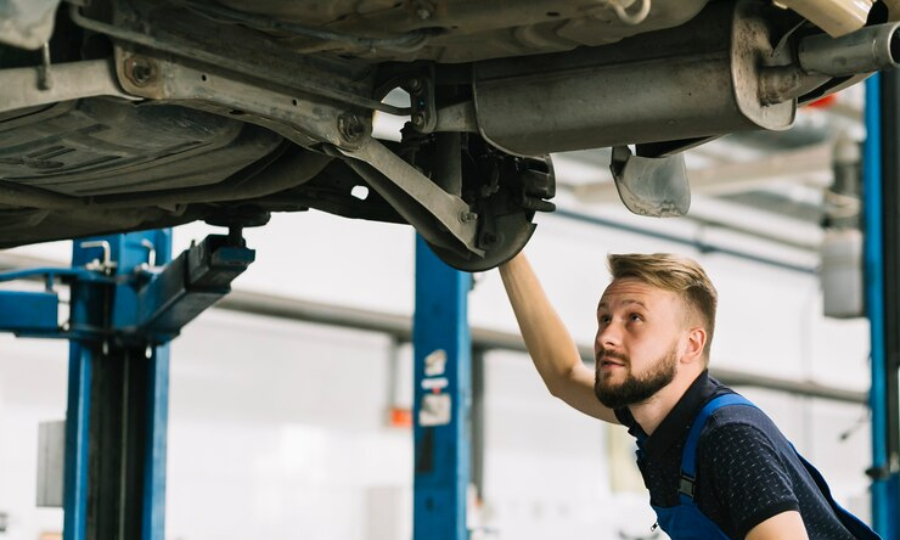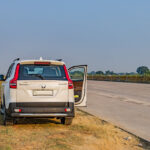Now Reading: Essential Summer Car Care Tips to Keep Your Vehicle Cool and Running Smoothly
-
01
Essential Summer Car Care Tips to Keep Your Vehicle Cool and Running Smoothly
Essential Summer Car Care Tips to Keep Your Vehicle Cool and Running Smoothly
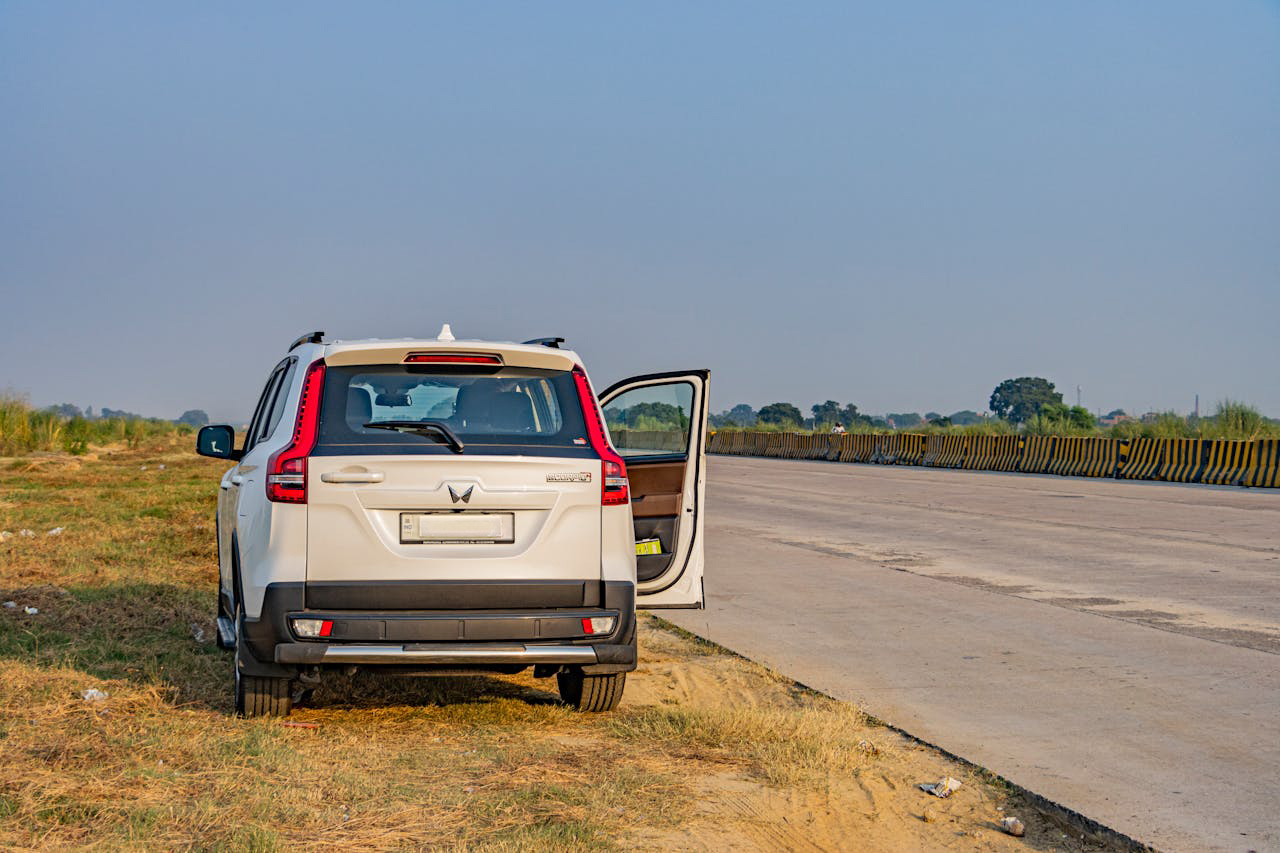
Indian summers can be brutal – not just for us, but for our cars too. If you’ve ever driven through a Delhi heatwave or a dusty Rajasthan road in May, you know the extreme heat and dust can push your vehicle to its limits. In this conversational guide, we’ll go through practical, beginner-friendly tips to help Indian car owners beat the heat. From keeping your engine cool to caring for your car’s paint, these tips will ensure your vehicle stays cool and running smoothly all summer (and make those road trips a lot less stressful!).
Engine Cooling and Fluids in Extreme Heat
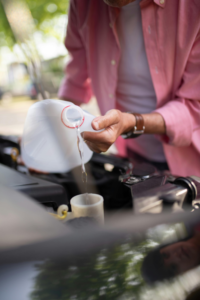 Regularly inspecting your engine cooling system is the first line of defense against overheating. Start by checking the coolant level in the reservoir and radiator; low coolant can quickly lead to an overheated engine. Top up with a proper engine coolant mixture (not just plain water) to the recommended level – the coolant fluid helps absorb heat from the engine and keep temperatures stable. It’s wise to inspect the radiator, hoses, and clamps for any leaks or cracks as well, since high temperatures put extra strain on these components. If you notice brittle hoses or loose clamps, address them promptly.
Regularly inspecting your engine cooling system is the first line of defense against overheating. Start by checking the coolant level in the reservoir and radiator; low coolant can quickly lead to an overheated engine. Top up with a proper engine coolant mixture (not just plain water) to the recommended level – the coolant fluid helps absorb heat from the engine and keep temperatures stable. It’s wise to inspect the radiator, hoses, and clamps for any leaks or cracks as well, since high temperatures put extra strain on these components. If you notice brittle hoses or loose clamps, address them promptly.
Also, check your engine oil and other fluids (brake fluid, transmission oil, etc.) because engines work harder in hot weather. Fresh oil and proper fluid levels help the engine run cooler and smoother. Don’t forget about the belts and fan – the serpentine belt and radiator fan are critical for cooling. Heat can make rubber belts and hoses crack or fray, so give them a look and replace any that show signs of wear to prevent a sudden failure. Taking these steps will keep your engine’s temperature in check even in 45°C Indian heatwaves, so you’re not left stranded with steam pouring out of the hood.
Battery Care Under the Summer Sun
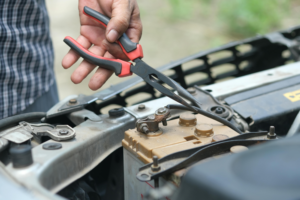 Car batteries often suffer silently during summer. Intense heat can accelerate the evaporation of battery fluid and cause corrosion on the terminals. What does that mean for you? A weaker battery that might fail when you least expect it. To avoid this, check your battery as summer approaches. If it’s the maintainable type, ensure the distilled water level is proper. Clean any white or greenish corrosion from the terminals and cable connectors using a mixture of baking soda and water (with gloves on) and then secure them tightly. A thin layer of petroleum jelly on the terminals can help prevent corrosion buildup.
Car batteries often suffer silently during summer. Intense heat can accelerate the evaporation of battery fluid and cause corrosion on the terminals. What does that mean for you? A weaker battery that might fail when you least expect it. To avoid this, check your battery as summer approaches. If it’s the maintainable type, ensure the distilled water level is proper. Clean any white or greenish corrosion from the terminals and cable connectors using a mixture of baking soda and water (with gloves on) and then secure them tightly. A thin layer of petroleum jelly on the terminals can help prevent corrosion buildup.
It’s also a good idea to have the battery’s health tested if it’s more than a couple of years old. Many service centers will test the voltage and cold cranking amps for you. Remember that excessive heat speeds up battery wear, so parking in the shade not only keeps your cabin cool but also gives your battery a break. If your battery is older or was already showing weakness in winter, consider replacing it before peak summer – it’s cheaper and easier than getting stranded with a dead battery on a sweltering day.
Tire Pressure and Tyre Care
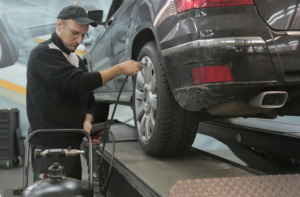
Your car’s tyres are literally where the rubber meets the road, and in summer those roads get hot. High temperatures cause the air inside tires to expand, which can lead to over-inflation. Paradoxically, long drives on scorching tarmac can also increase the risk of under-inflated tires overheating. Improper pressure is a recipe for blowouts, especially at highway speeds. To stay safe, check your tire pressure regularly (when the tires are “cold,” i.e. early morning before driving) and keep it at the manufacturer’s recommended PSI. This will ensure the best grip and reduce the chance of a tire failure in extreme heat.
Also inspect the tire tread for wear. Indian summers can deteriorate tires faster, creating microscopic cracks that might not be obvious. If your tires are older than ~5 years or have low tread (less than 1.6 mm depth), consider replacing them before that big summer road trip.
Tip: Some experts suggest using nitrogen instead of normal air to inflate tires, since nitrogen gas expands less with heat. This can help maintain more stable pressure on hot days. It’s not mandatory, but it’s an option available at many Indian fuel stations now.
Don’t forget the spare tire – make sure it’s inflated and in good shape too. And if you plan long drives, carrying a portable tire inflator or foot pump and a tire puncture repair kit is a smart move. Properly cared-for tires will give you better mileage, handling, and peace of mind when the mercury soars.
Air Conditioning Check-Up
When it’s 40+ degrees outside and you’re stuck in traffic, a healthy car air conditioner is your best friend. A fall in AC performance is not just about comfort; it can actually be a safety issue if the cabin becomes too hot. So, before summer hits full force, get your AC system inspected. This means checking the refrigerant gas level, AC compressor, and condenser for any issues. If the air isn’t as cold as it used to be, you might need a refrigerant top-up (recharge). Also, have a look at the cabin air filter – a clogged cabin filter (common in dusty Indian cities) will restrict airflow and strain the AC. Cleaning or replacing that filter can often restore cooling efficiency noticeably.
During servicing, ask the technician to clean the condenser (the radiator-like part of the AC, usually in front of the engine radiator) because it can get clogged with dirt and bugs. A properly functioning AC not only keeps you cool but also helps demist the windshield during surprise monsoon rains post-summer. As one guide put it, a faulty AC can make summer drives unbearable, so it’s worth ensuring yours is in top shape. If you notice weak cooling, odd smells, or noises when you run the AC, don’t wait – have it looked at before it fails on the hottest day. Your comfort on those long drives to the hill stations depends on it!
Windshield Protection and Visibility
The windshield and wipers need some love in summer too. We often associate wiper care with the rains, but summer in many parts of India brings dust storms and the occasional surprise thunderstorm. Dust and grime on the windshield can create glare in bright sun and make driving hazardous. Keep your windshield clean by using the washer fluid (fill it up with a good windshield washer solution) and wiping the glass regularly. Check your wiper blades: heat can cause the rubber to harden or crack. Lift the wipers off the glass when parking under harsh sun for long periods (this prevents the rubber from baking onto the hot glass). If the wipers are leaving streaks or are frayed, replace them – they’re inexpensive and crucial for visibility. It’s best to do this before the monsoon hits, rather than finding out your wipers are useless during the first rainstorm.
Now, for windshield protection from the sun, one of the easiest and most effective tools is a sunshade. These are those foldable or roll-up reflective shades you place on the inside of your windshield when the car is parked. Using a windshield sunshade can lower the cabin temperature significantly and protect your dashboard from UV damage. You’ve probably noticed how cars parked in open sun have scorching hot dashboards and steering wheels – a sunshade prevents a lot of that by blocking direct sunlight. It also helps keep the interior a bit cooler, meaning your AC has less work to do when you start driving. In addition to a front windshield sunshade, you can use removable side window sun blinds (the mesh type) especially if you have kids in the back seat, to keep the sun out while driving. Just be sure any window shades you use while driving don’t impede your view or violate local tint laws.
Lastly, if you have any small chips or cracks in your windshield, get them repaired before the summer heat enlarges them. Glass can expand and those cracks can grow in high temperatures. A little crack repair now can save you from needing a full windshield replacement later.
Paint and Interior Care from Sun Damage
Your car’s exterior paint and interior materials are under assault during summer from UV rays and intense heat. Ever seen a once-shiny red car turned dull pink? That’s UV damage over time. The solution is simpler than you might think: wash and wax your car at the start of summer. A good coat of wax acts like sunscreen for your car’s paint. It forms a thin protective layer that helps prevent fading and oxidation. As one article noted, a coat of wax polish can protect the paint and underlying metal from harsh sunlight, much like sunscreen for your skin. You don’t have to be a professional – even a DIY wax application every few months can do wonders for maintaining the shine and color. Plus, keeping the car clean of dust and bird droppings (which can bake onto paint in the heat) will preserve the finish.
For the interior, the biggest issues are heat and UV causing things to crack or fade. Dashboard, leather/vinyl seats, and plastic trim are prone to sun damage. Park in the shade whenever possible to prevent that “greenhouse effect” inside the cabin. When shade is scarce, use a car cover if you’re leaving the vehicle parked for long periods, or at least the windshield sunshade as mentioned. A quality car cover not only guards against UV rays fading the paint, but also keeps off dust and bird mess– very useful if you don’t have covered parking.
You can also apply interior protectants (many are available in Indian auto shops) on your dashboard and leather seats. These sprays or wipes have UV protectants that nourish the material and help prevent cracks. For fabric seats, using seat covers can both protect the original upholstery and be easier to clean sweat and dust off. And don’t leave gadgets or aerosol cans (like deodorants or power banks) exposed on the dash or seats – in extreme heat, they can burst or get ruined. A little care for your car’s aesthetics will keep it looking new even after many summers.
Be Prepared: Summer Emergency Kit and Practices
Even with the best preparation, you should be ready in case things go wrong – a sudden breakdown or an emergency in peak heat. Emergency preparedness is key for summer drives, especially long road trips. Here are some items and tips to ensure you and your vehicle are ready for the unexpected:
-
Coolant and Water: Always carry a bottle of engine coolant or plain water. If your engine starts overheating, having extra coolant or water can be a lifesaver to top up the radiator and get you to safety (remember to never open a hot radiator cap immediately – wait for the engine to cool). Also carry drinking water for yourself and passengers; dehydration can hit quickly if you’re stranded in heat. In fact, experts suggest keeping a flask or bottle of water in the car at all times during summer.
-
Basic Tool Kit and Jumper Cables: A set of basic tools (screwdriver, pliers, wrench, etc.) can help tighten a loose clamp or battery terminal. Jumper cables or a portable jump-starter can rescue you from a dead battery situation (which is more common in extreme temperatures).
-
Tire Emergency Tools: A puncture repair kit or tire sealant, and a working jack and wheel spanner are essential. Summer road heat plus long drives can be hard on tires, so be prepared to fix a flat. Also consider carrying a tire pressure gauge to check pressures if you suspect a leak.
-
Emergency Signals: Carry a reflective warning triangle and a high-visibility vest. If you have a breakdown on a highway, you want to be visible to other drivers. Small road flares or an LED hazard light can be useful at night.
-
First Aid and Personal Comfort: A basic first aid kit is a must year-round. For summer, also have sun protection – sunscreen, a hat, maybe a spare umbrella. An umbrella isn’t just for rain; it can provide instant portable shade if you have to wait outside your car. A small towel can help you cool down (wet it with water and put it on your neck). These personal comfort items can make a big difference if you’re stuck waiting for help under the sun.
-
Mobile Phone Charger and Numbers: Keep a car charger or a power bank in your car. In an emergency, you’ll need your phone. Save important numbers like your roadside assistance, insurance helpline, or a trusted mechanic in your contacts. Many insurance policies or car companies in India offer 24×7 roadside assistance – know how to contact them. This can help with quick towing or on-site repairs if your car overheats or breaks down.
Finally, if you do face a summer breakdown, try not to panic. Turn on your hazard lights, move the car to a safe spot if possible, and call for help. If the issue is overheating, as mentioned, wait for the engine to cool before tinkering. Open the bonnet to vent heat. It’s useful to keep yourself safe and as cool as possible while you sort things out.
Conclusion
Indian summers present a unique set of challenges for car owners: searing heat, clouds of dust, urban traffic jams that test your engine’s cooling, and long holiday road trips to beat the city heat. But with the above summer car care tips, you’ll be well prepared. In summary, keep your engine cool with proper fluids, care for your battery and tires, ensure your AC and visibility are top-notch, and protect your car’s exterior and interior from the sun. Most importantly, be proactive – a little preventative maintenance in May can save you from a big headache (and expense) in June.
With the right care, your vehicle will handle the Indian summer like a champ, keeping you comfortable and safe on the road. So go ahead and plan that summer getaway or tackle that daily commute – you and your car are ready to take on the heat! Stay cool and happy driving












